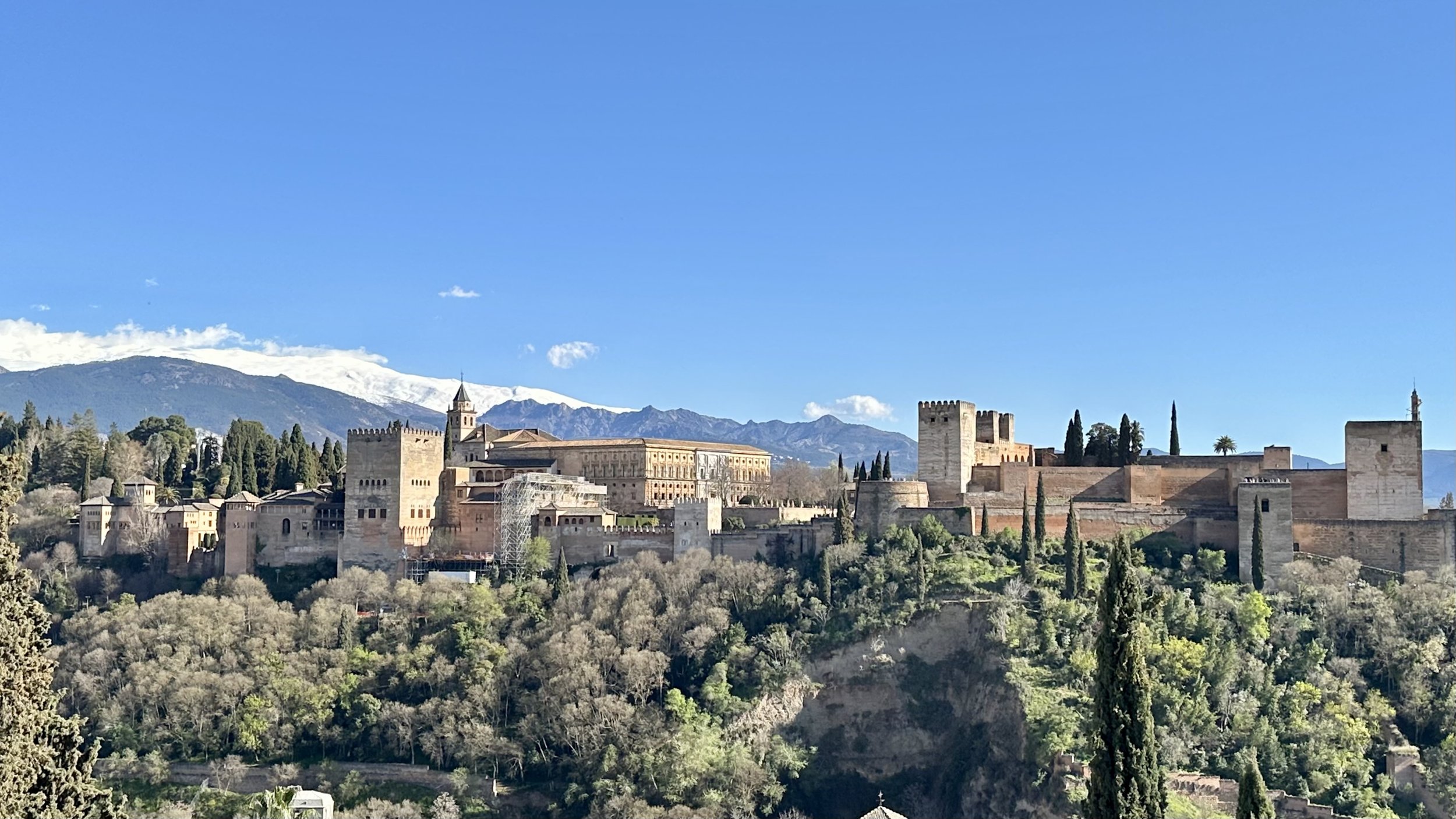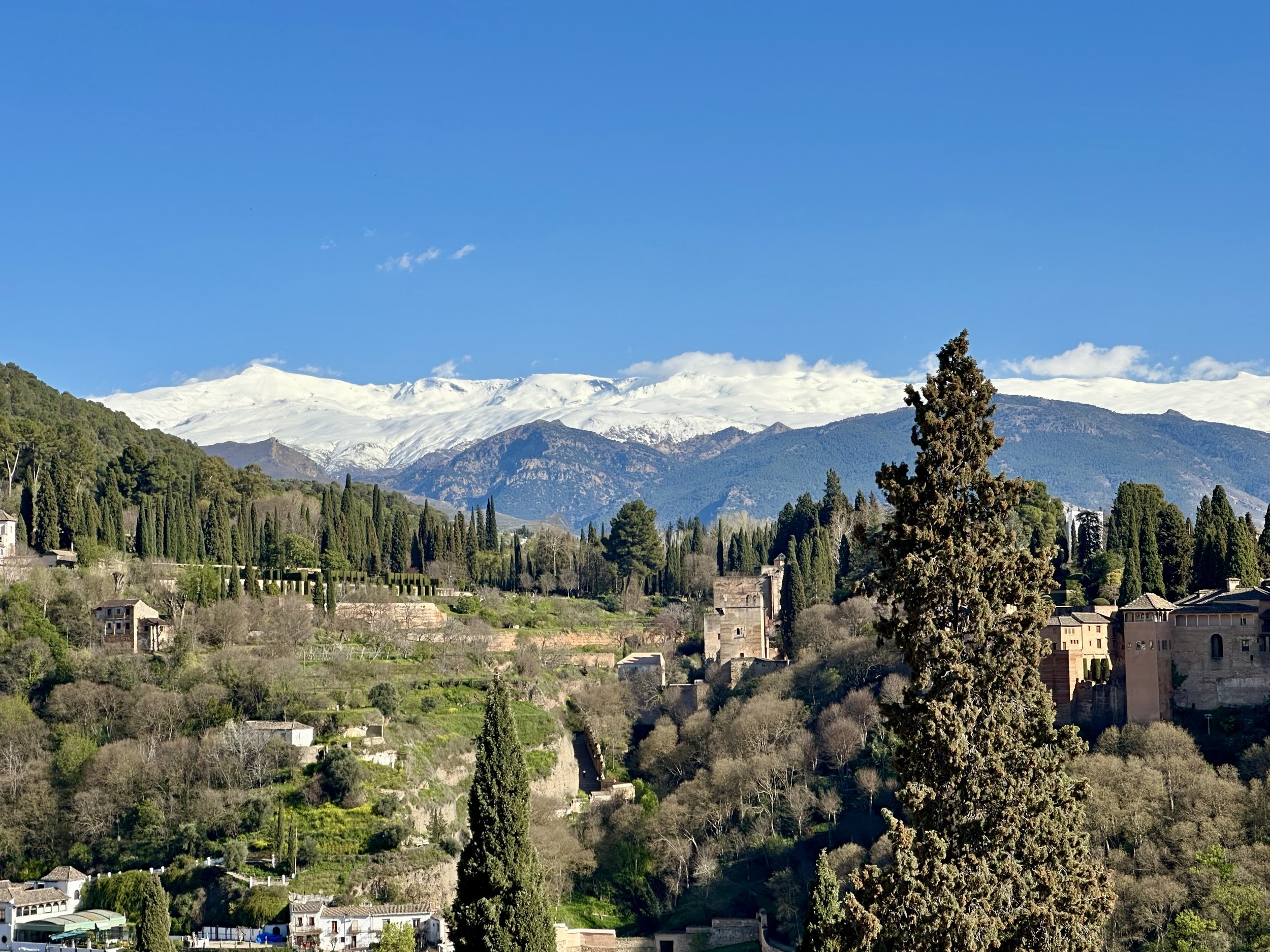The Alhambra Part 2
There was so much to see in the Alhambra that I had to write two posts!
The Partal Palace sat apart from the other Nasrid Palaces. Built by Sultan Muhammad III, it was the oldest surviving palace in the Alhambra. It had a lovely garden with a reflecting pool, sculpted hedges, and sweeping views of the neighboring hills.
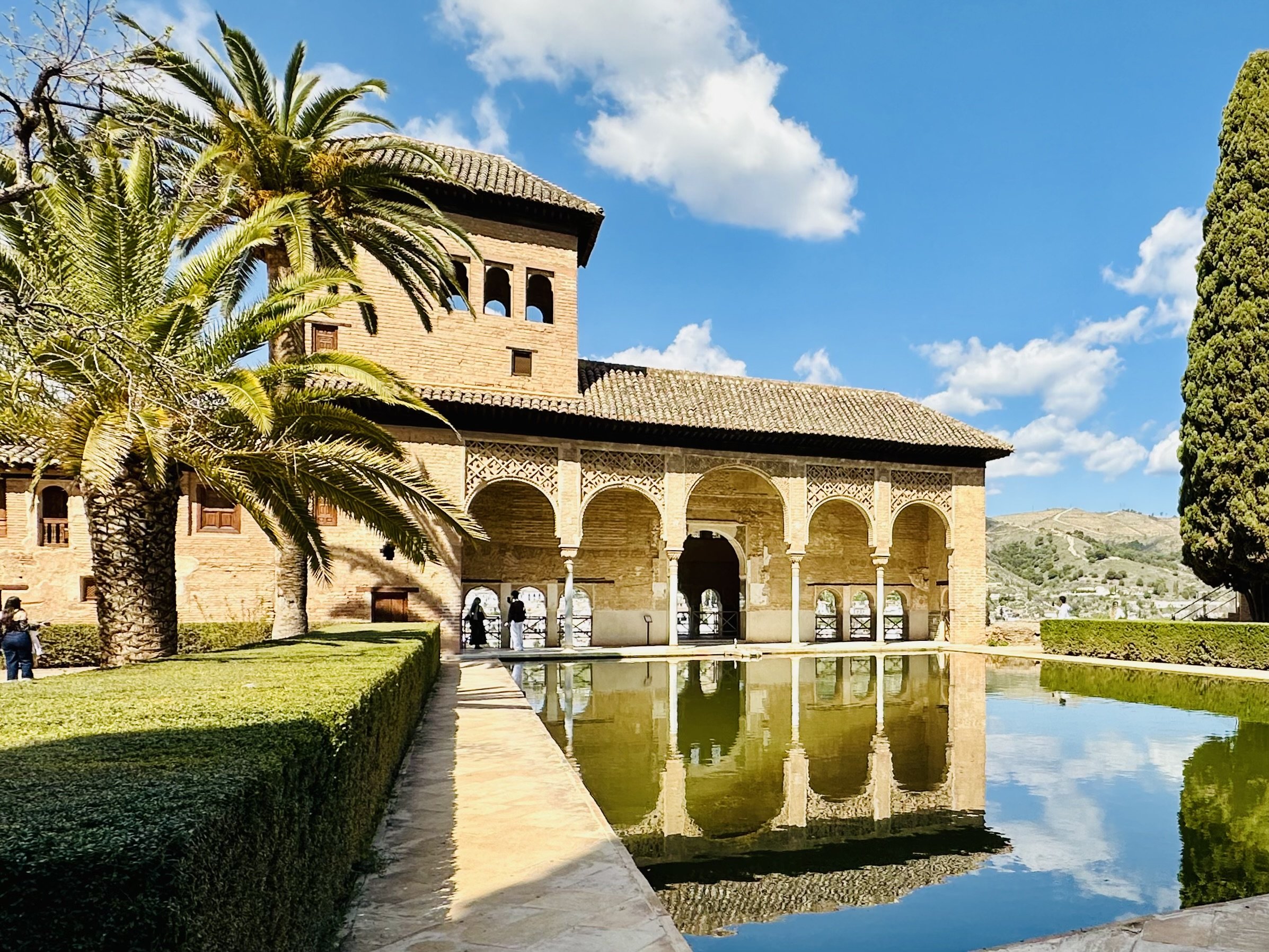

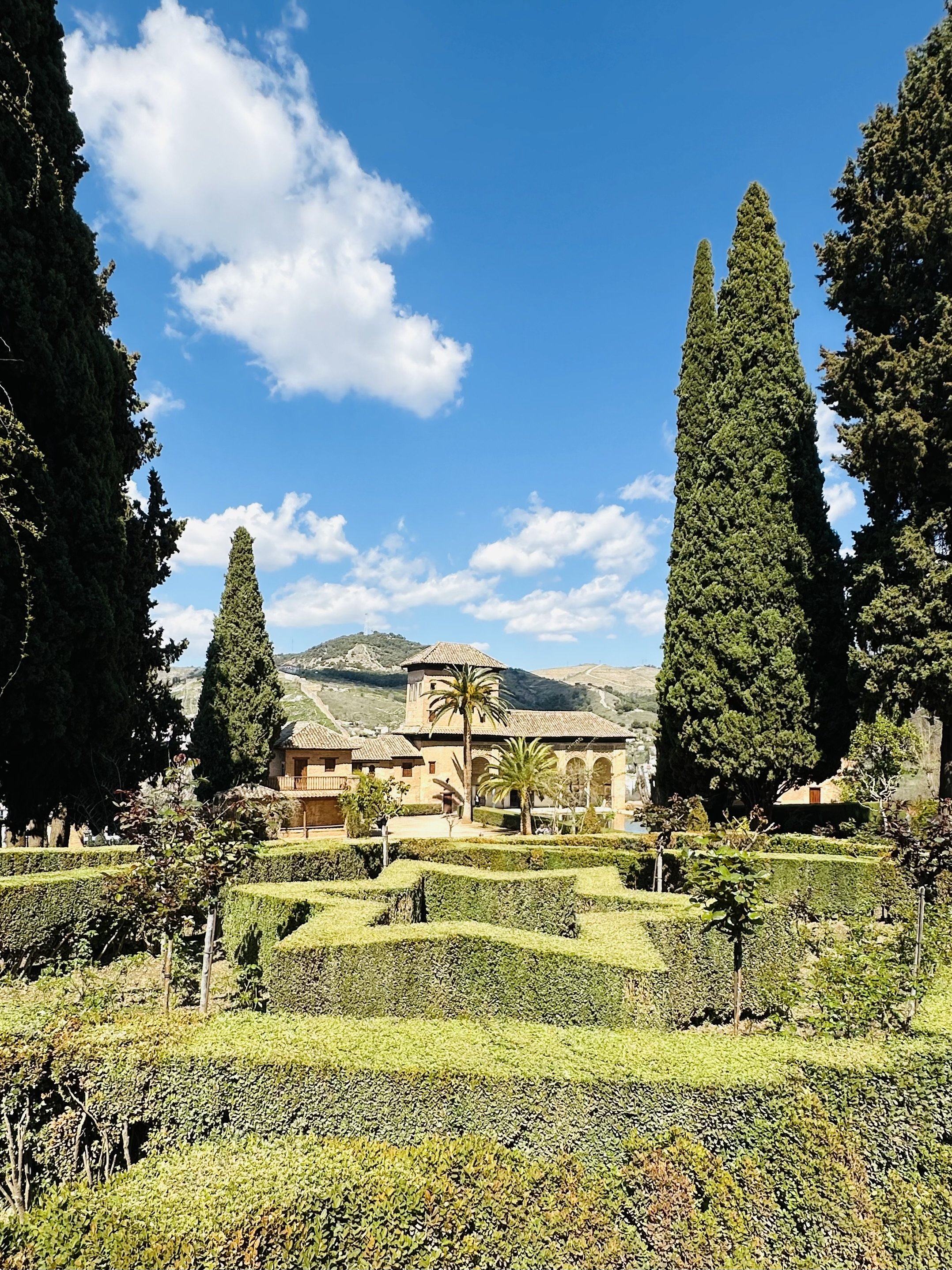
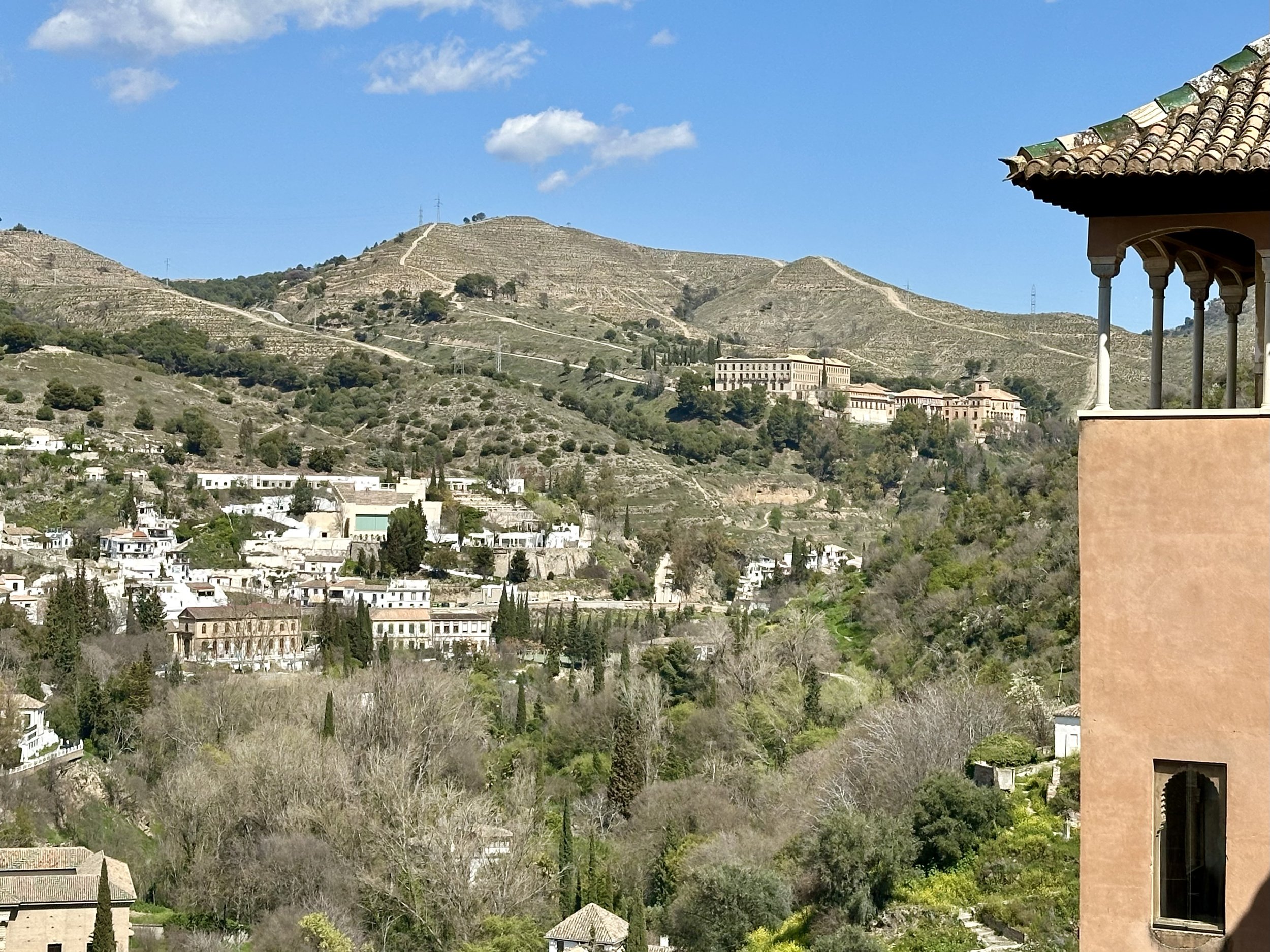
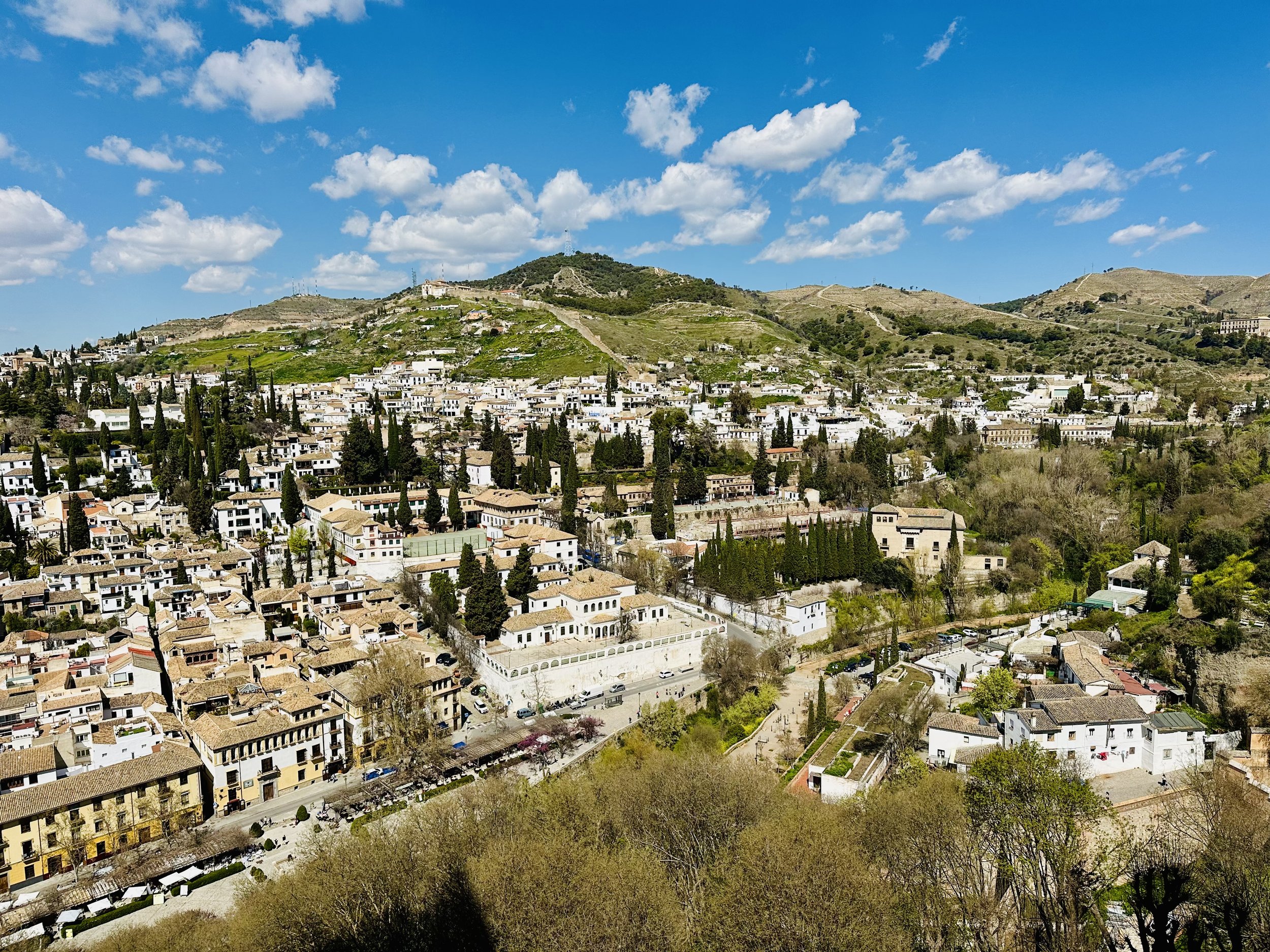
Palace of Charles V
We (reluctantly) left the Nasrid Palaces and walked to the Palace of Charles V, its 16th century Renaissance style in startling contrast to what we had just seen. Its design - a square building with a circular courtyard - was avant-garde for its time. Construction began in 1527 and continue for more than 100 years. No monarch ever lived in this palace; King Charles V commissioned it, but never returned to Granada. The palace was left unfinished, without a roof, until a 20th-century restoration.
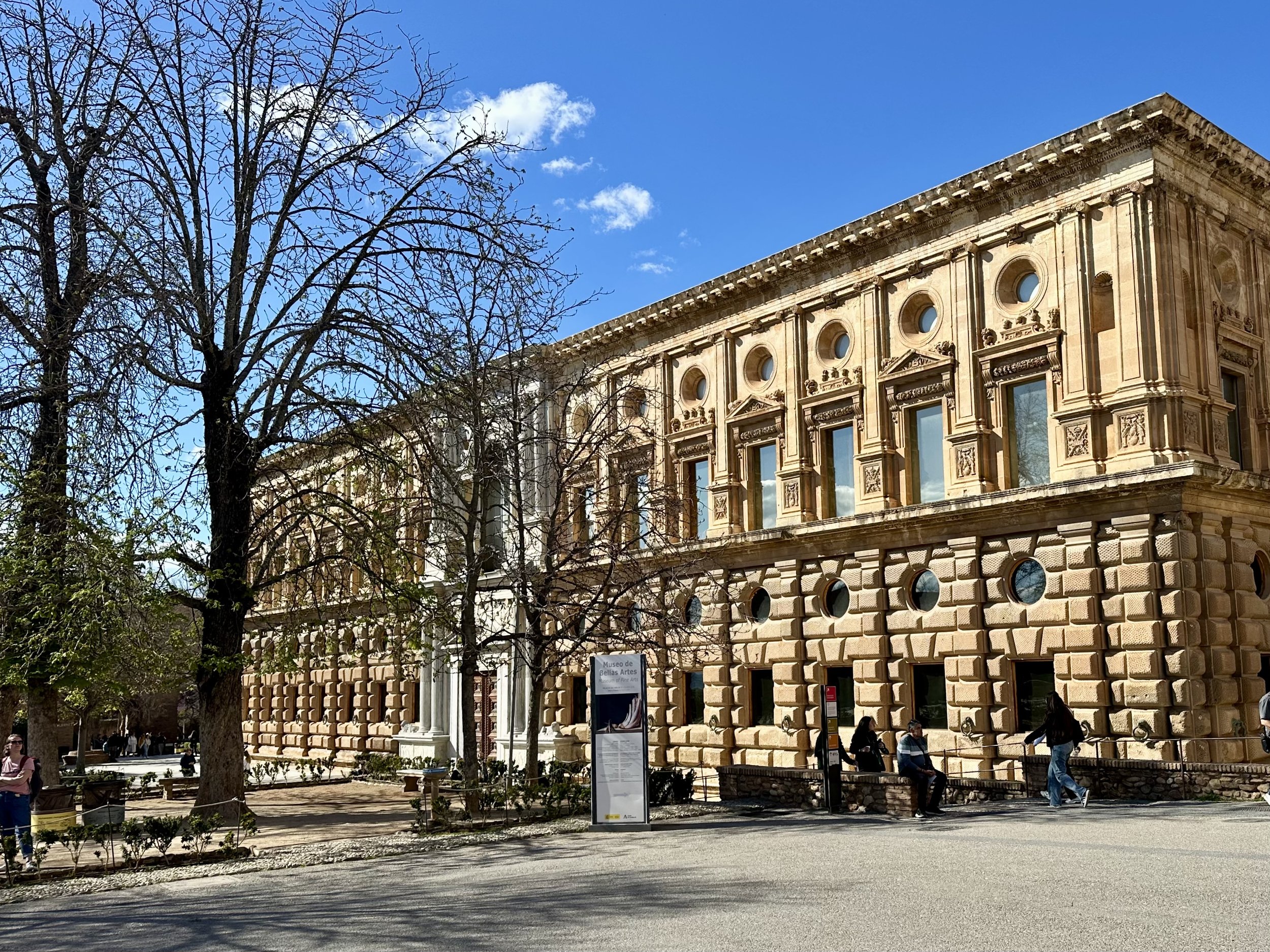

The Alcazaba
Our guided tour ended at the Renaissance palace. We continued to the opposite end of the Alhambra from where we had started: the Alcazaba (from the Arabic al-qaṣabah, meaning “citadel”). Built by Sultan Mohammed I in 1238, this fortress was the oldest surviving part of the Alhambra. We climbed two of the towers to enjoy the views of the Alhambra, downtown Granada, and the snow-covered mountains of the Sierra Nevada.
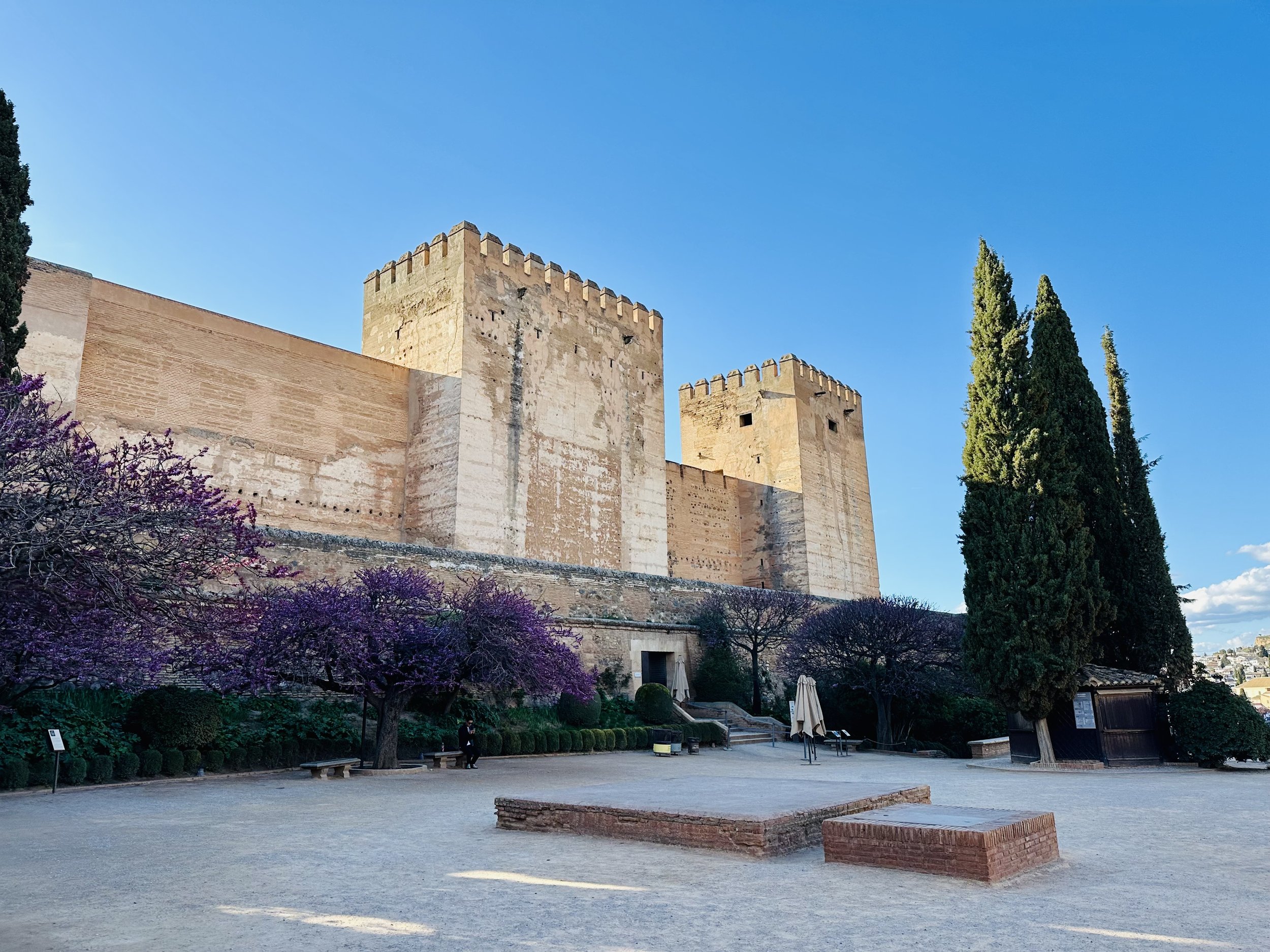
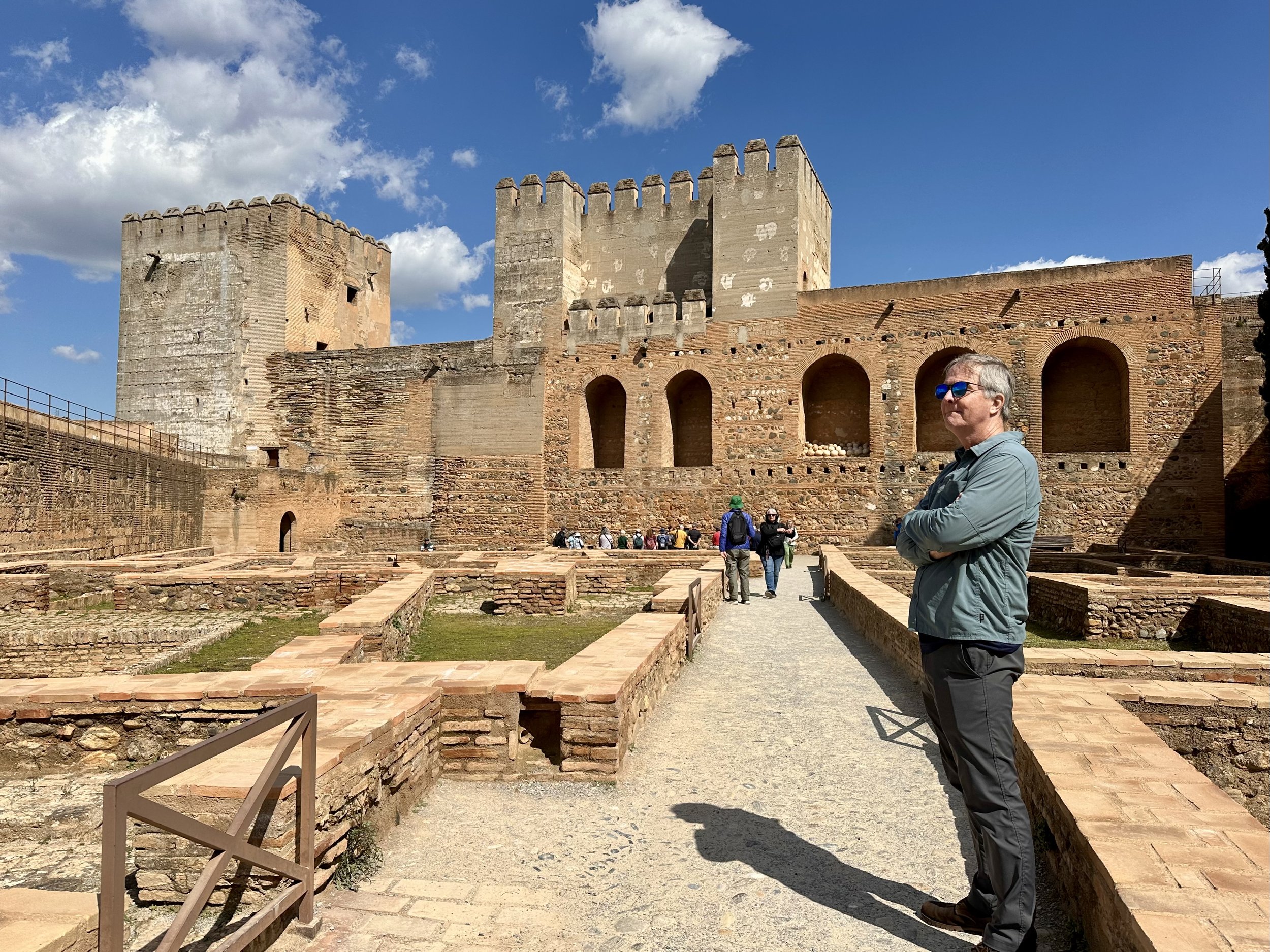
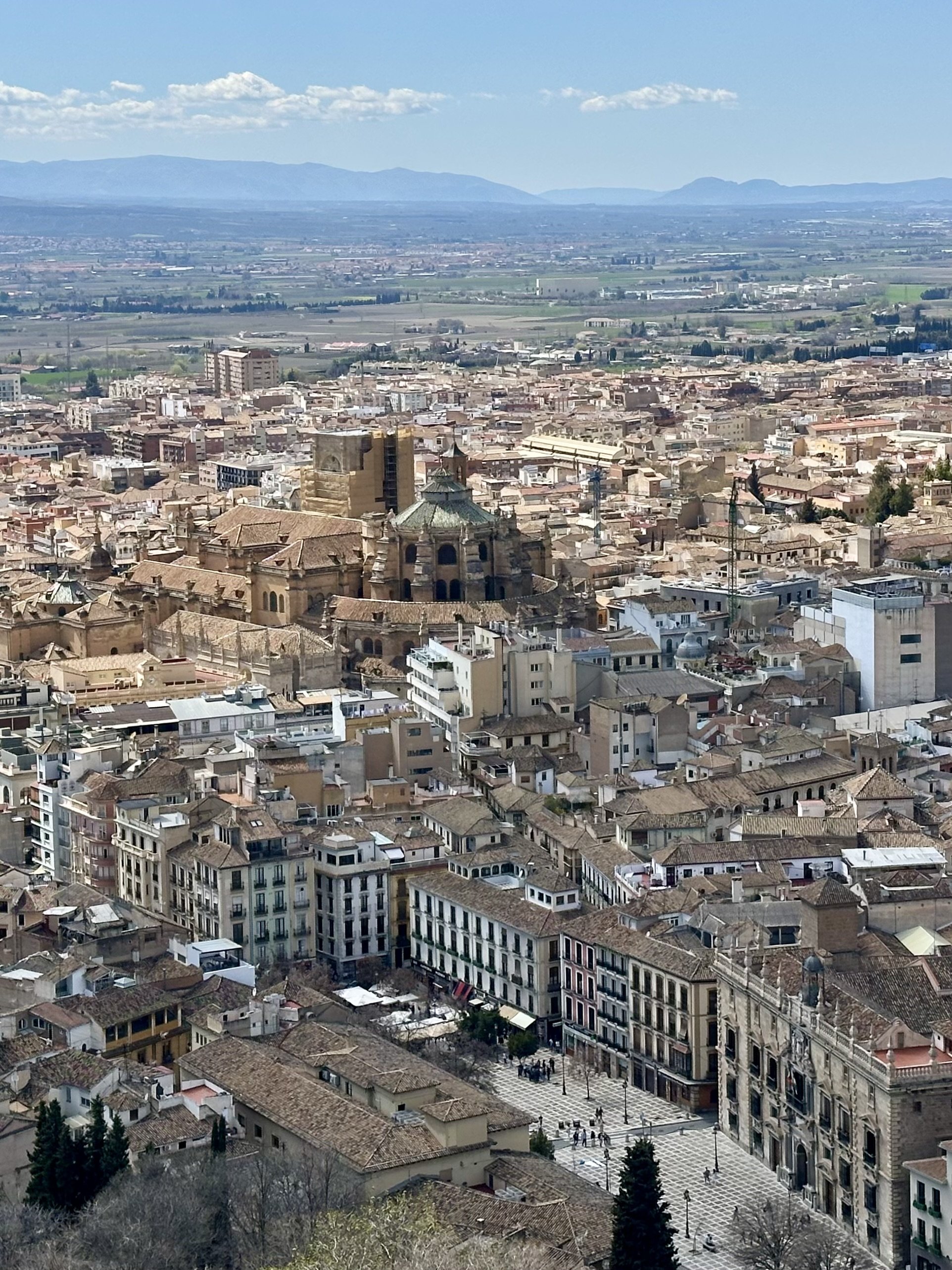
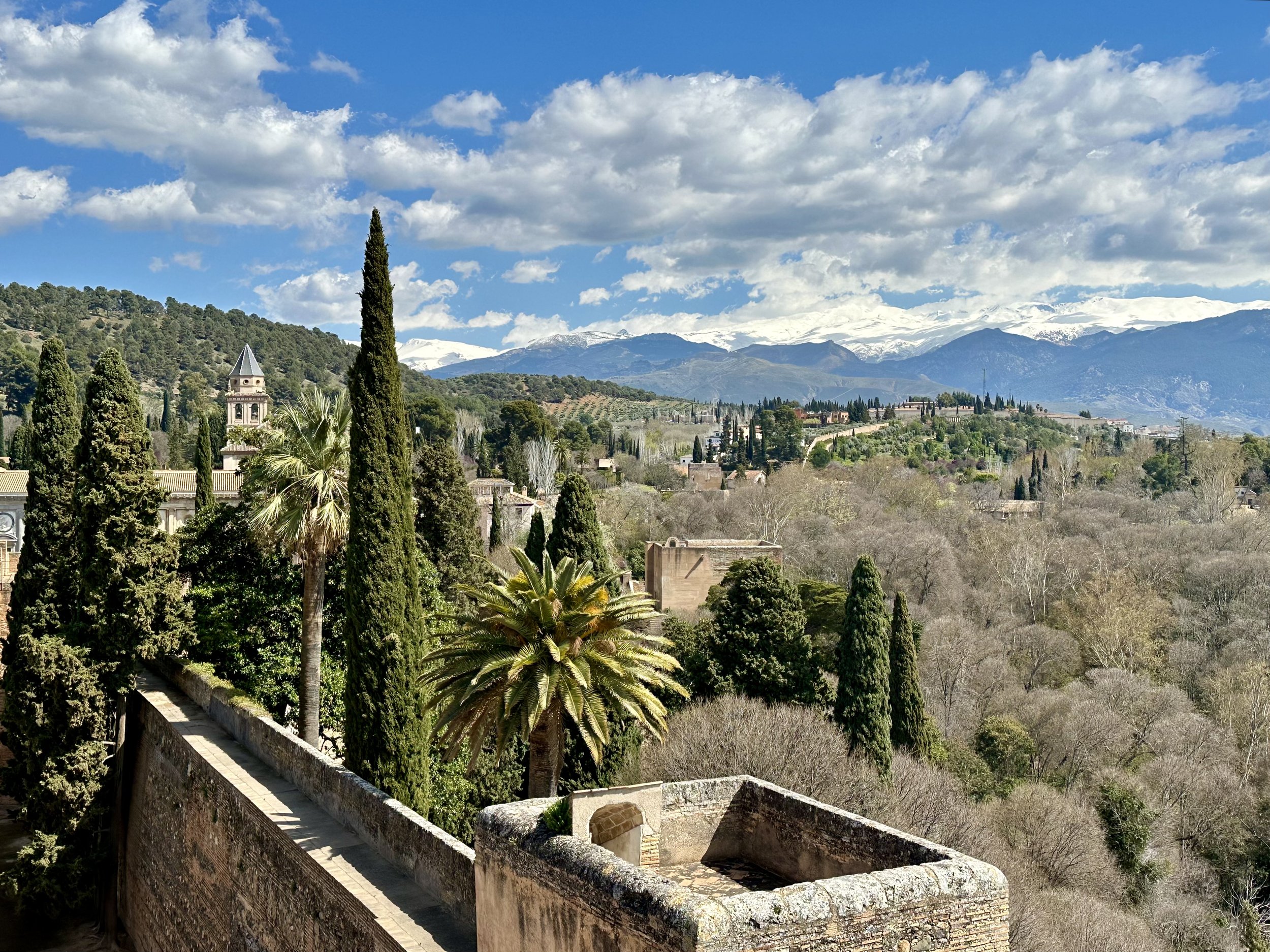
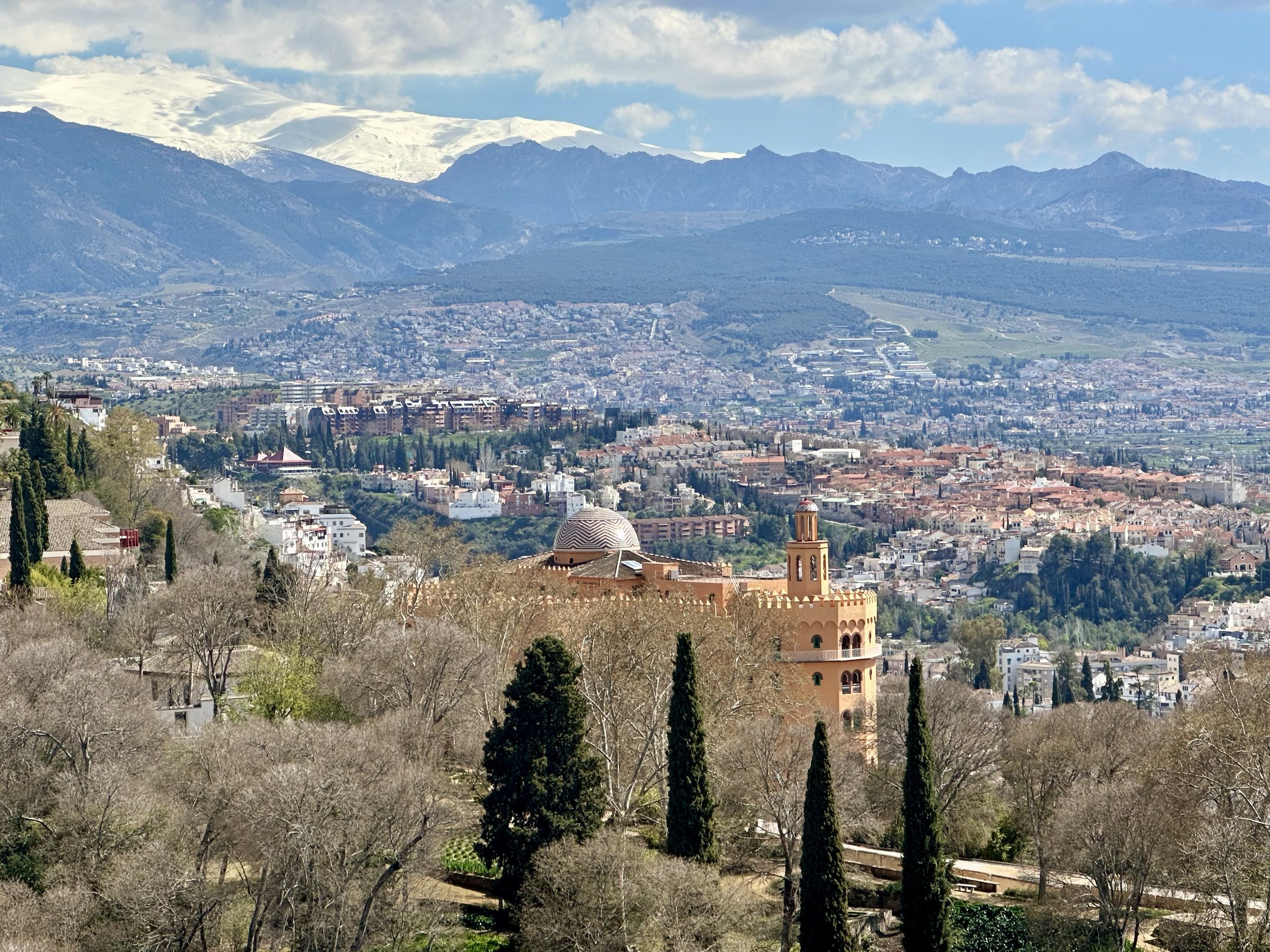
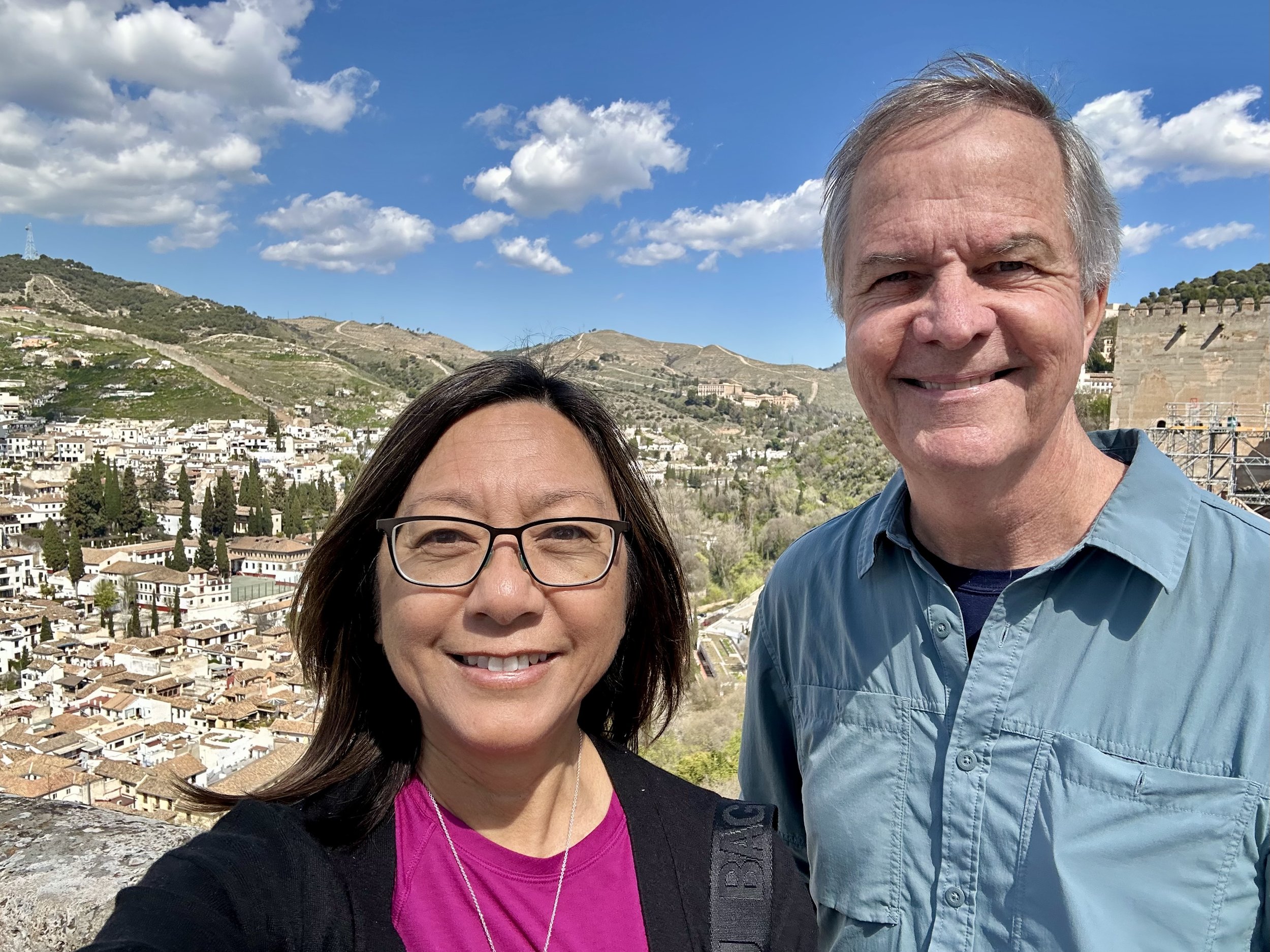
We had spent the night in the Alhambra, and we had toured its major structures. Now we were curious to explore another part of Granada and see what the Alhambra looked like from the outside. We exited the gates and walked down a long pedestrian path. It was wide, but steep. About halfway down was a statue of Washington Irving, who published Tales of the Alhambra in 1832. The path joined a street with souvenir shops and restaurants. Then we were at Plaza Nueva, in the heart of downtown Granada.
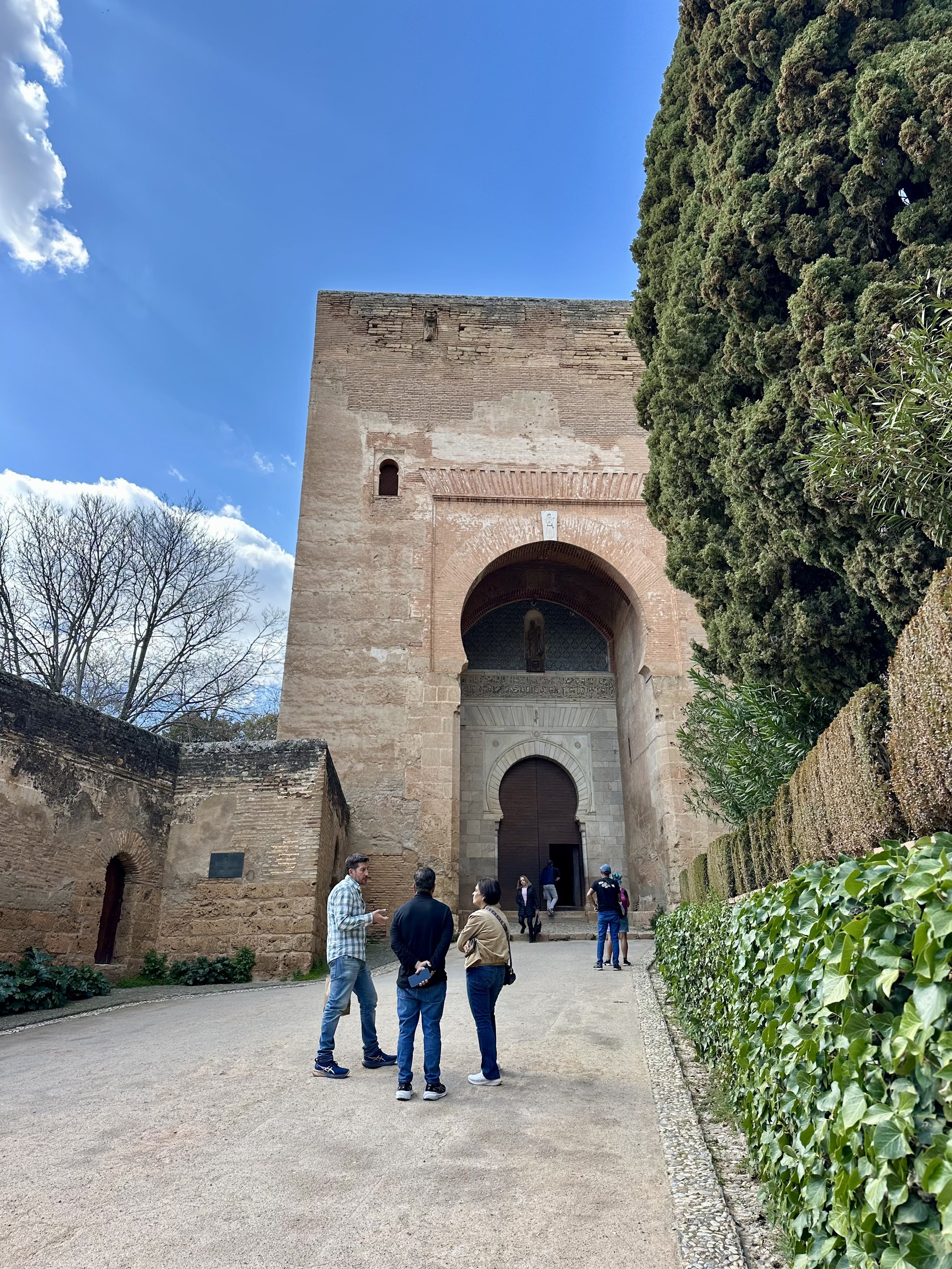
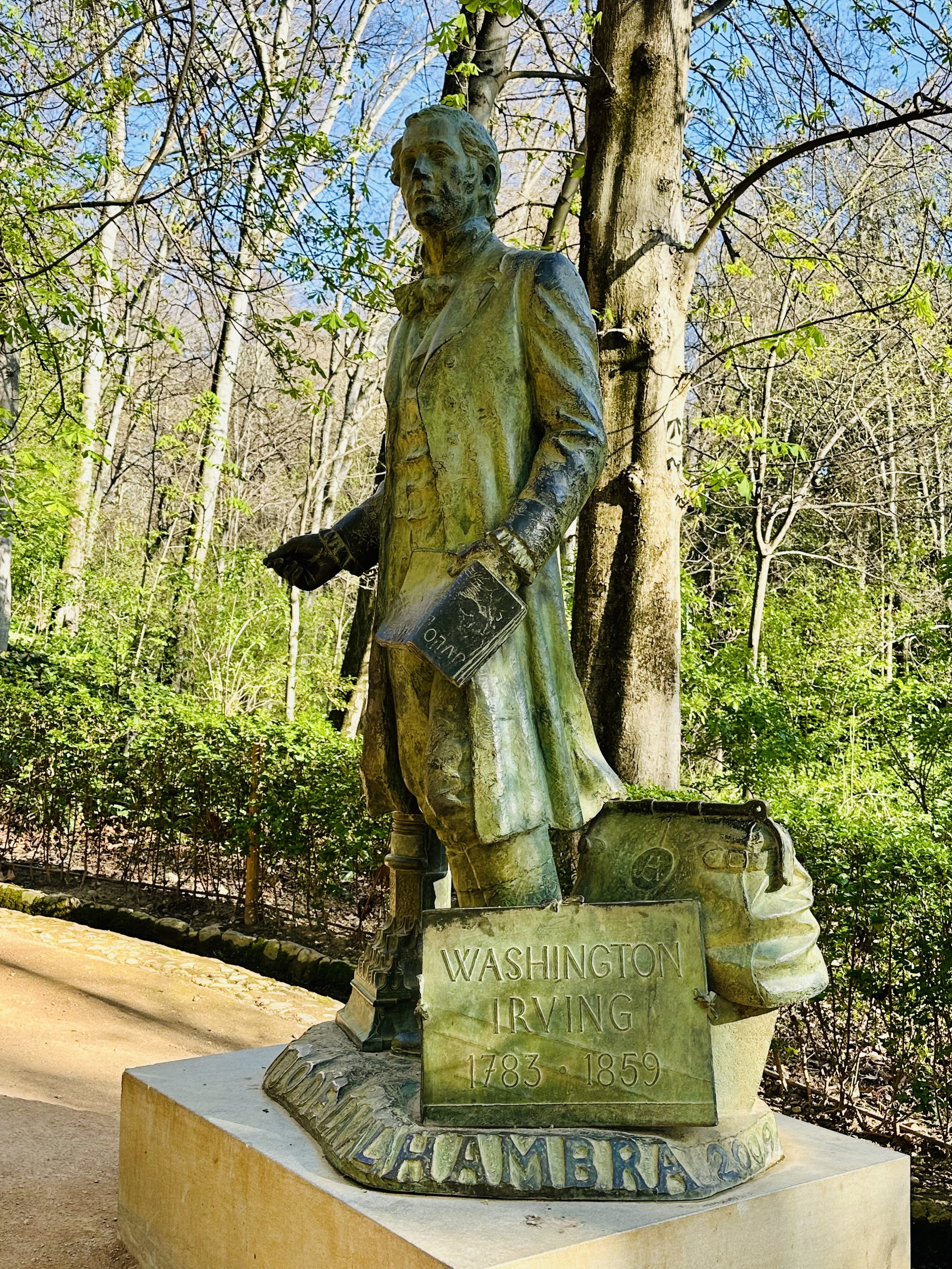
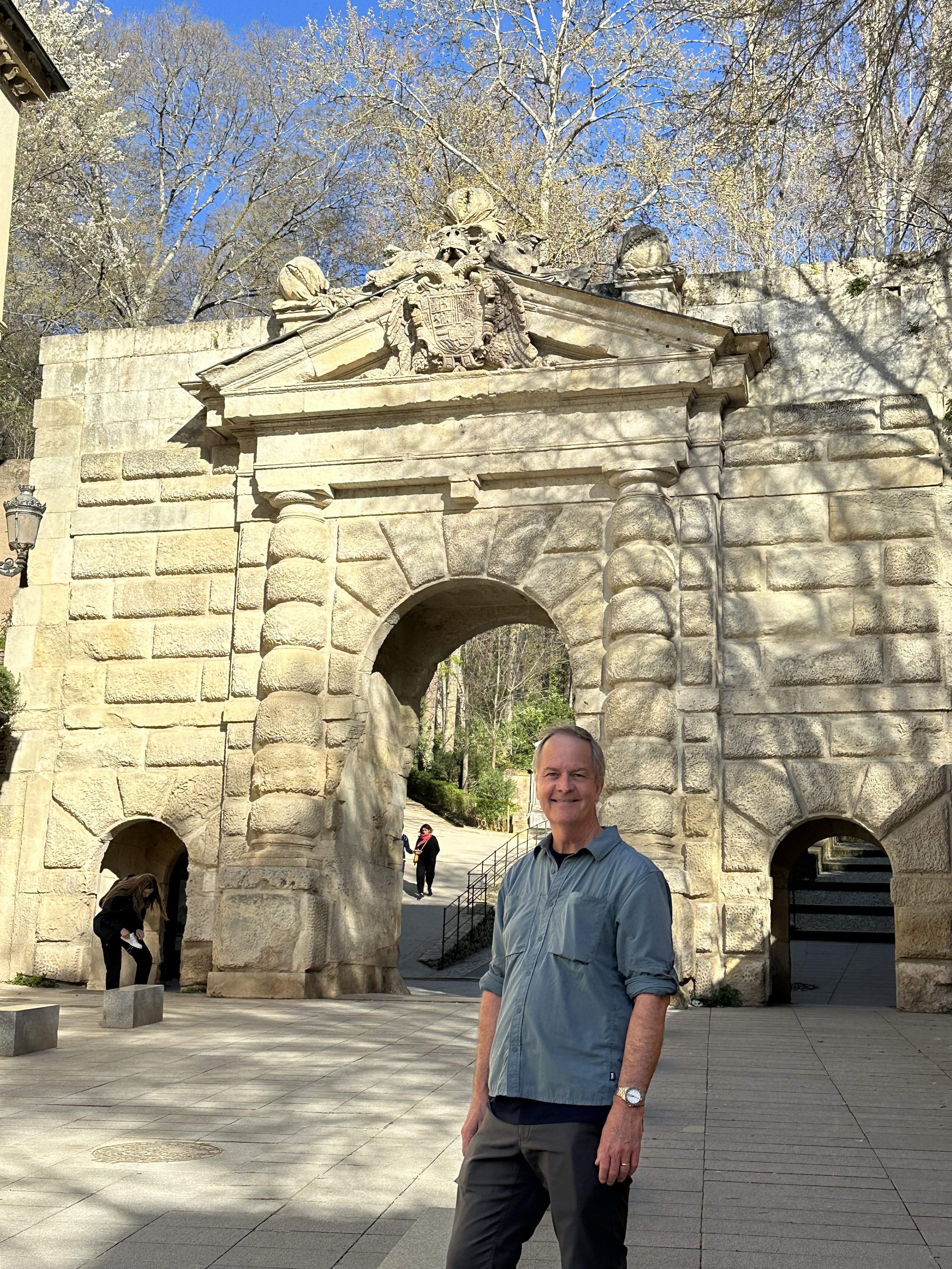
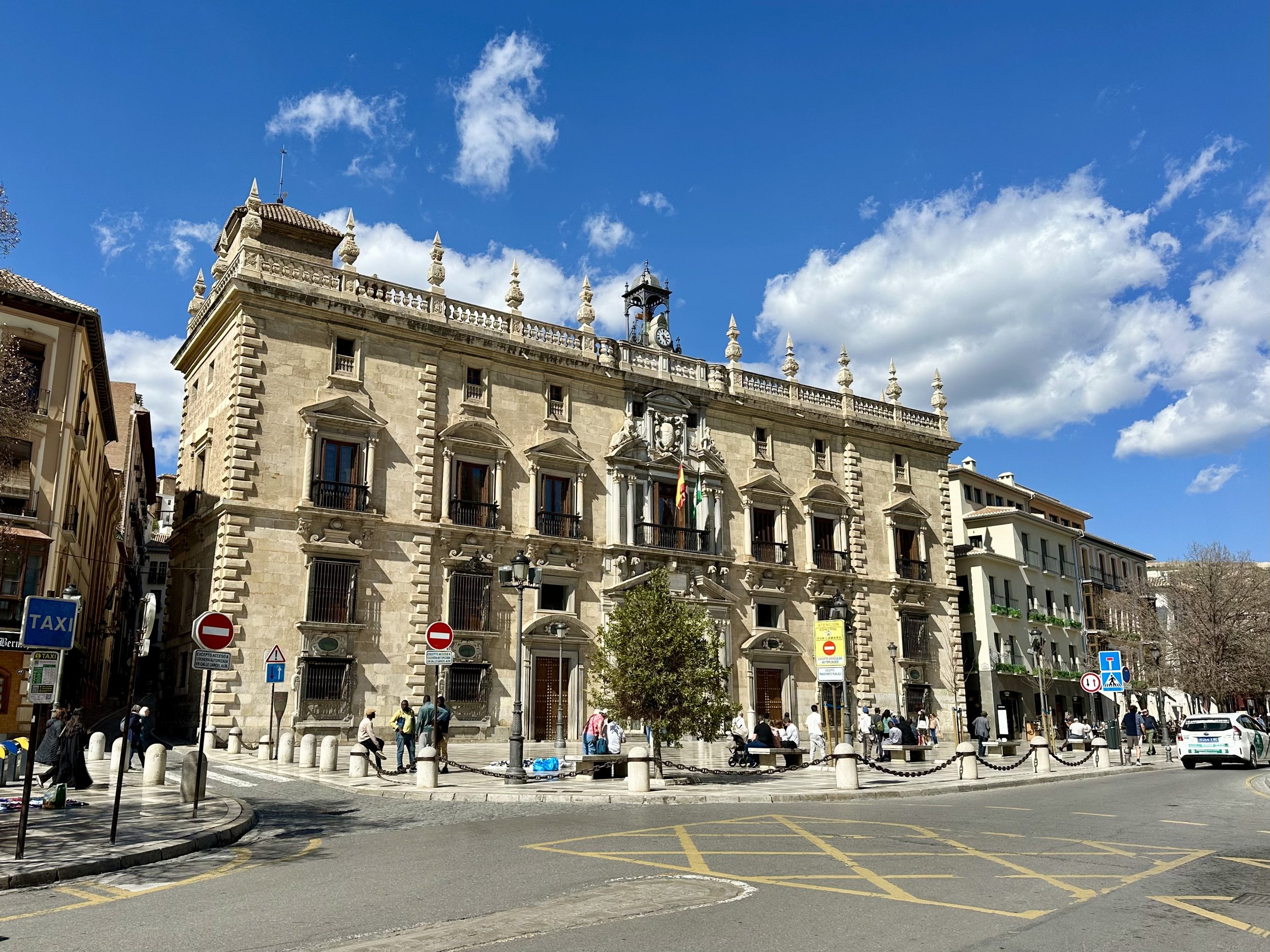
Albayzín
We walked along Carrero del Darro, with shops to one side and small stone bridges crossing the river to the other side. The road became very narrow, which was a bit nerve-wracking because it was a main bus route. The buses were small, but it was still a tight squeeze! We were in Albayzín (Albaicín), the Moorish Quarter of Granada. This historic neighborhood predated the Alhambra - in the 11th century, the Zirid Dynasty had its Royal Palace and Great Mosque here. During the Nasrid Dynasty, the Albayzín was a vibrant residential neighborhood with many mosques and markets. After the Christian Reconquest, Moriscos (Muslims forcibly converted to Christianity) lived here, and the mosques were replaced by parish churches. The Albayzín is a UNESCO World Heritage Site.
We made our way up the hill, wandering through a labyrinth of steep, narrow cobblestone streets. There were charming houses, many with small patios and wonderful views of the Alhambra. Eventually, we found a restaurant that thankfully had not closed for siesta. It was the perfect reward for our hot uphill climb: cold drinks, a delicious meal, and a table on the terrace with a fantastic view.
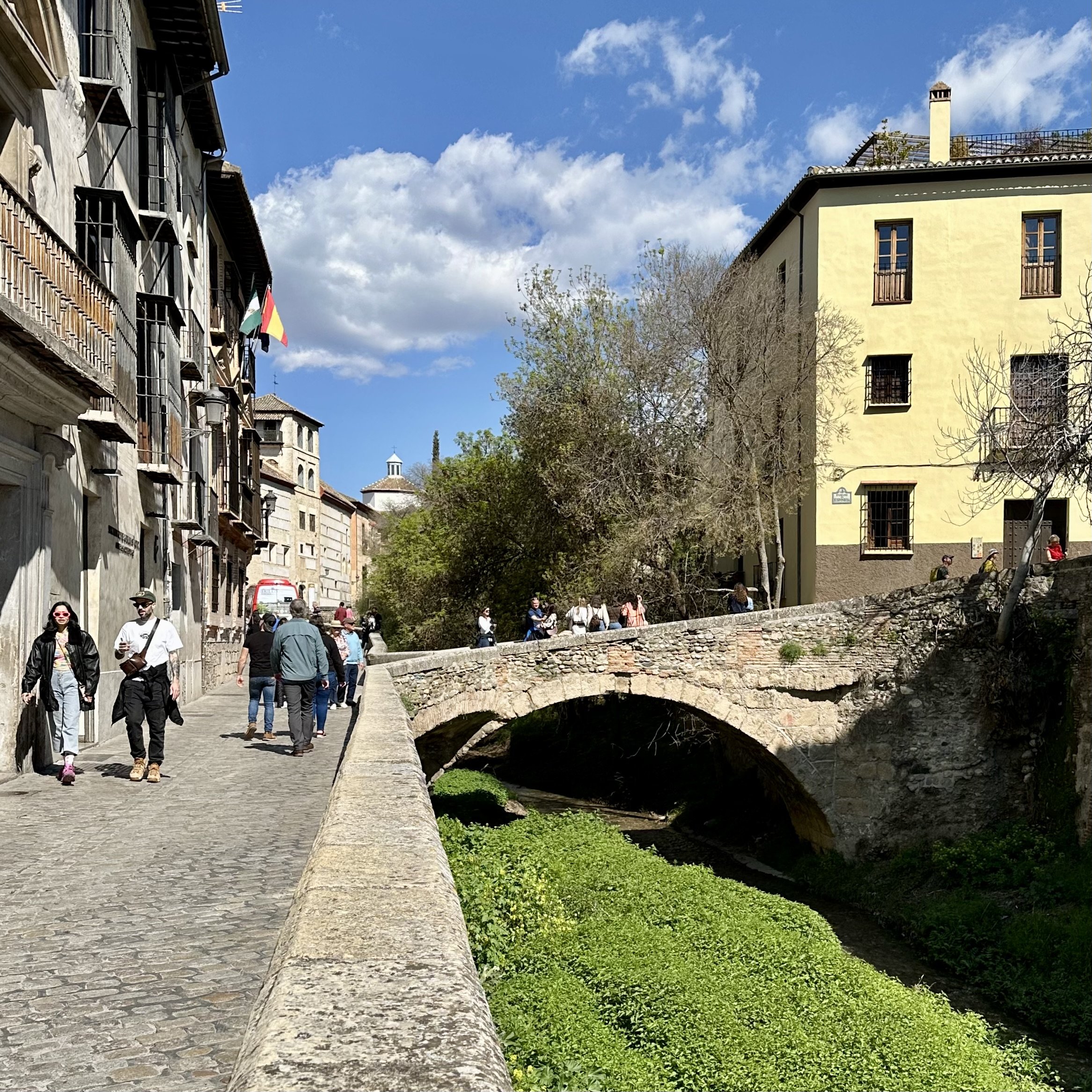
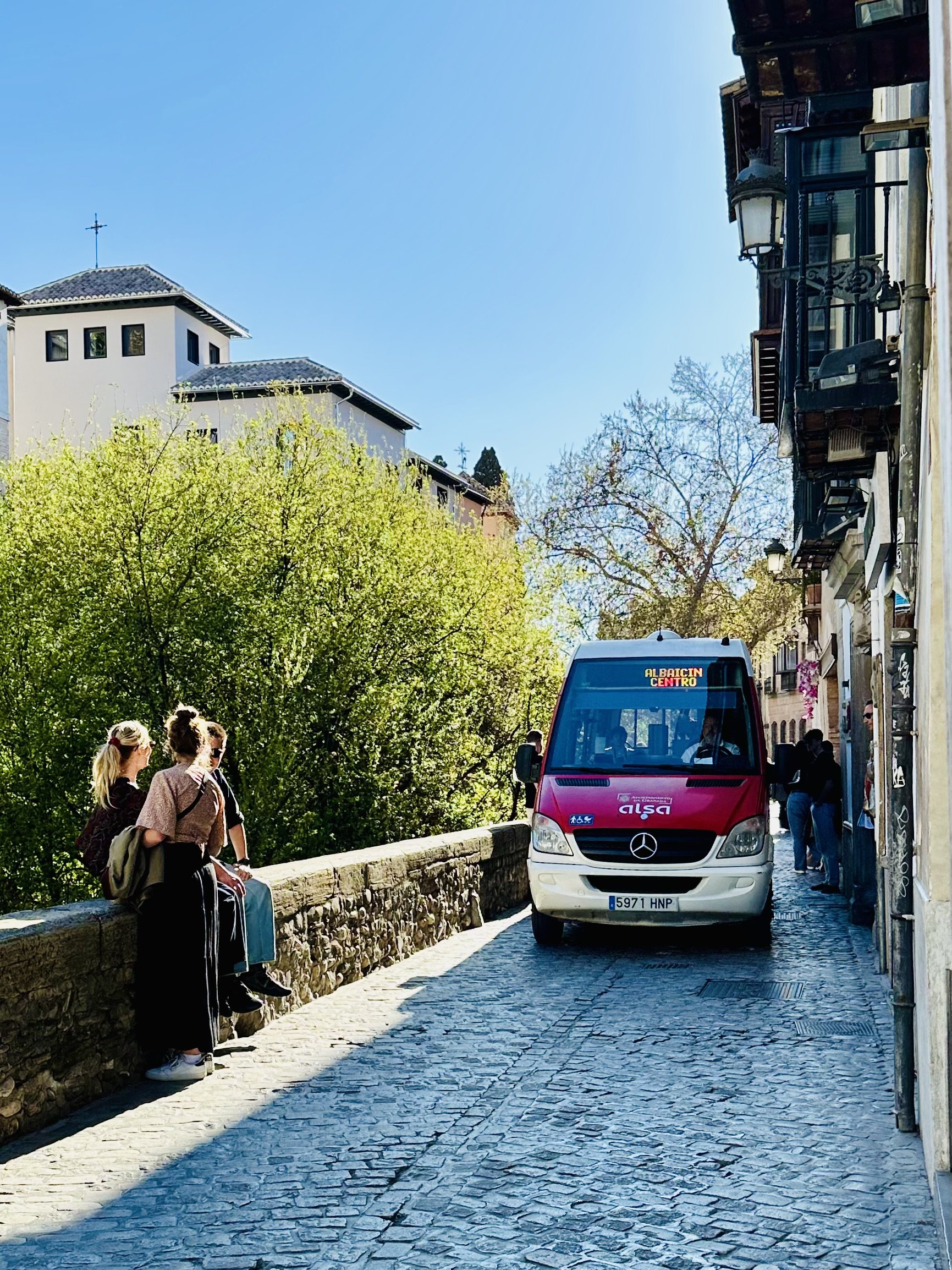
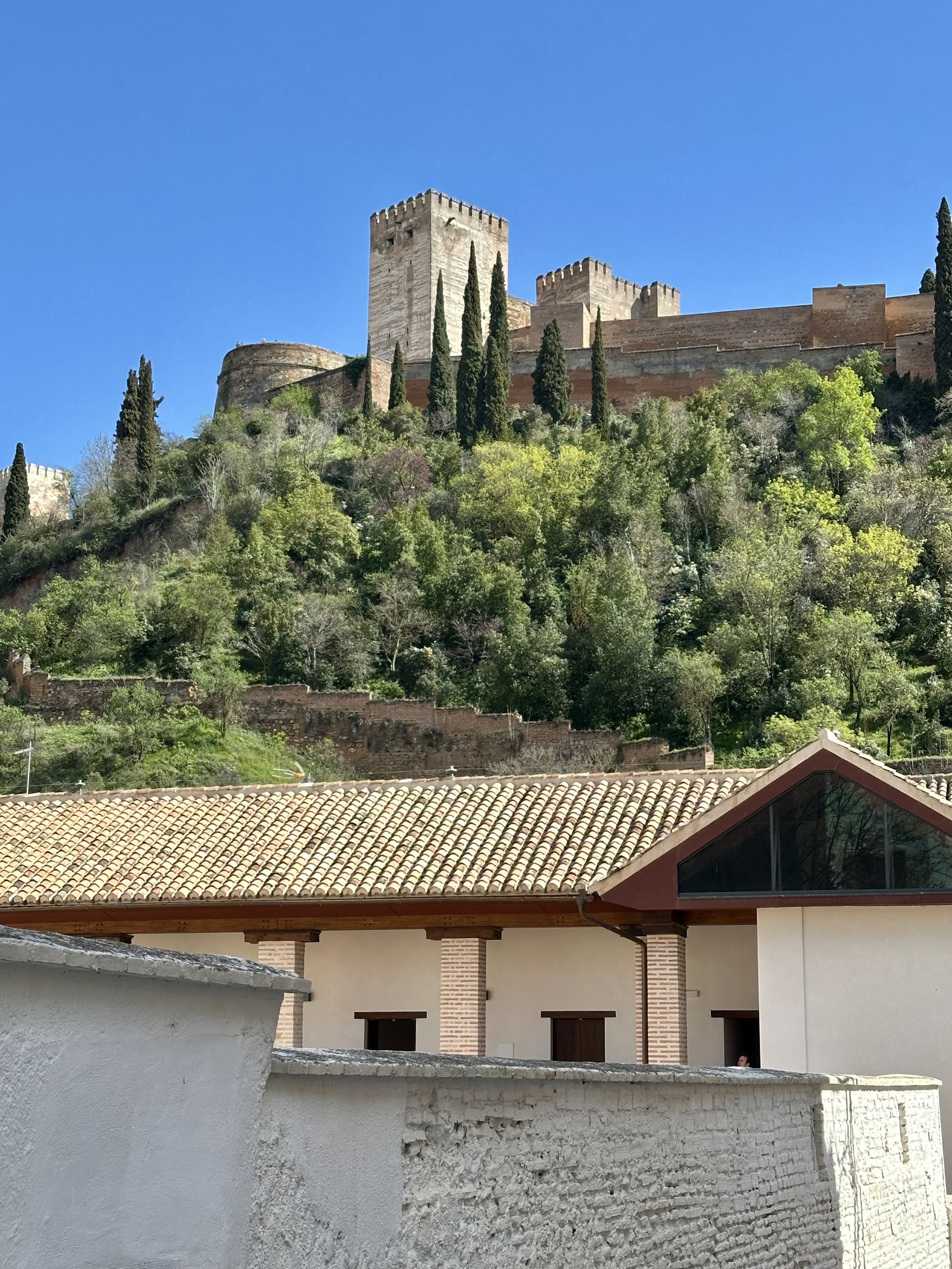
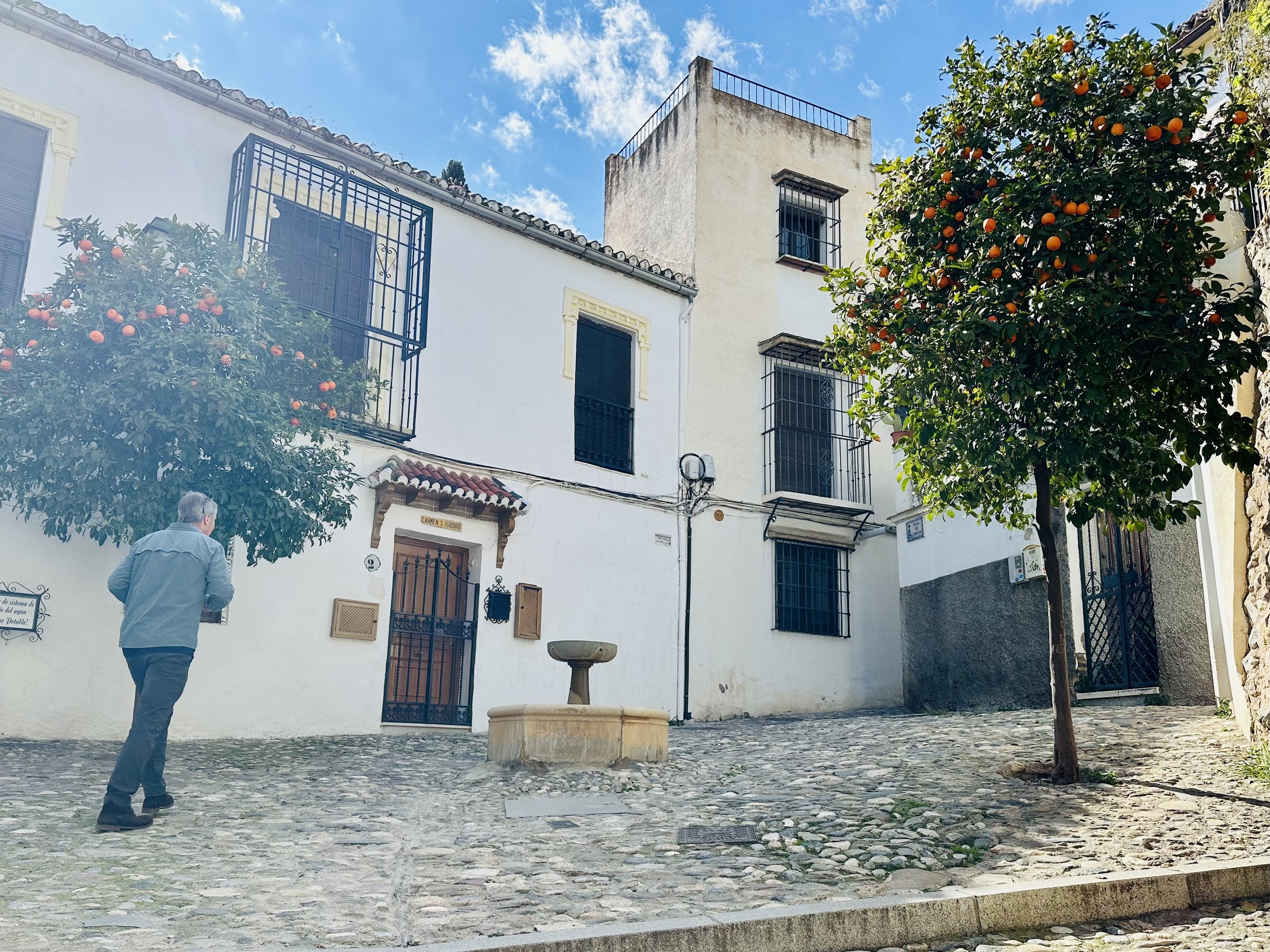
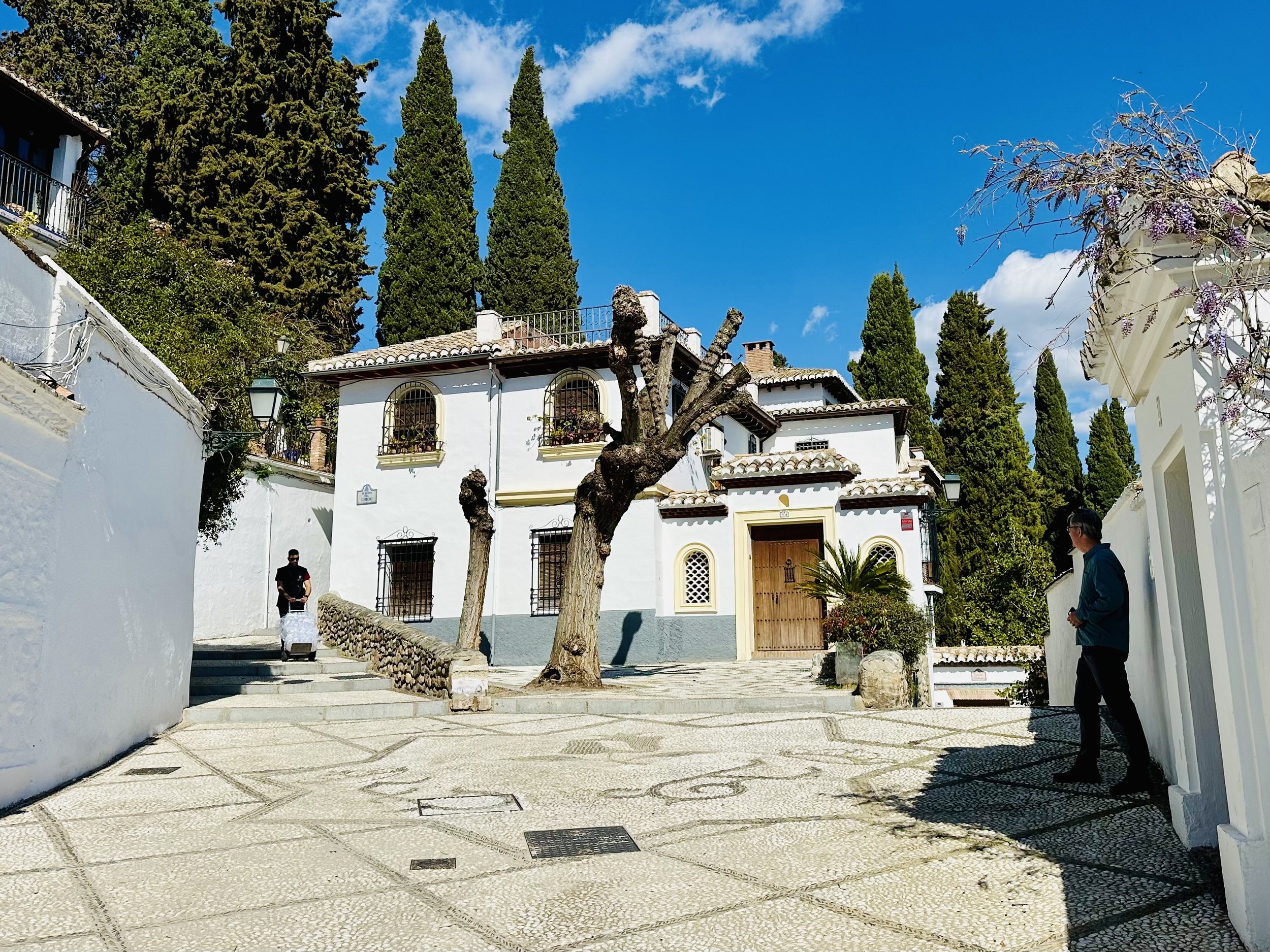
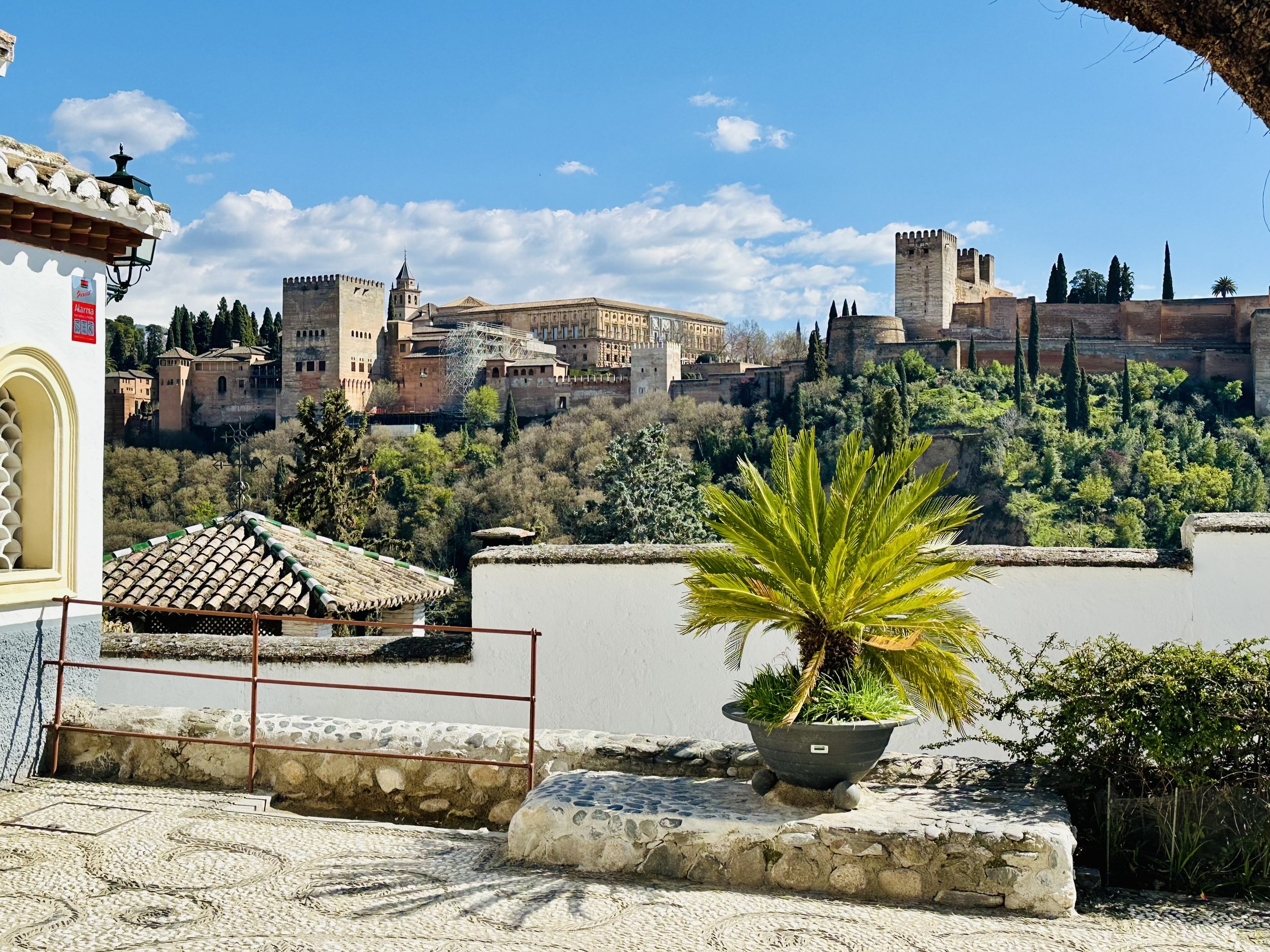
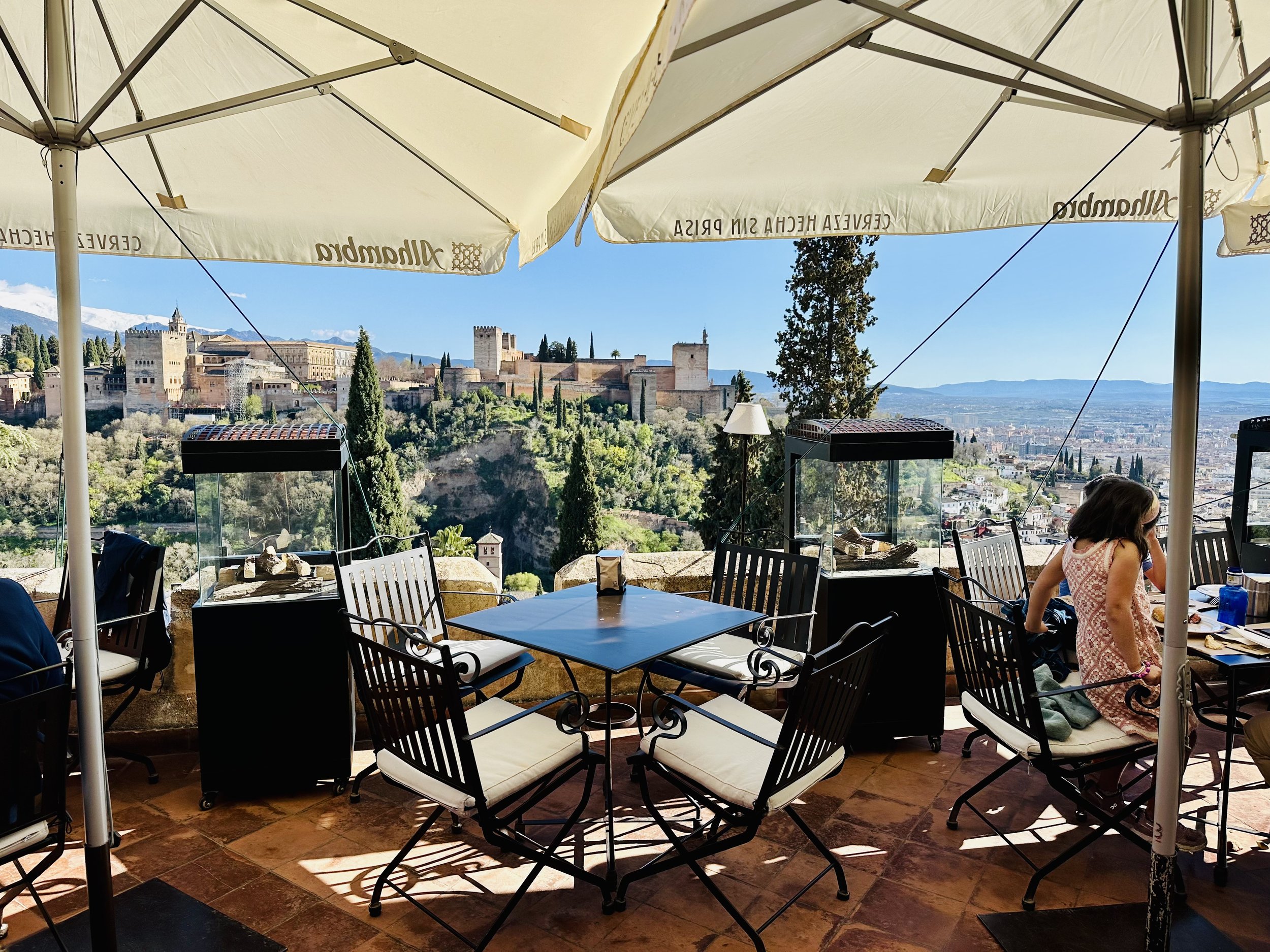
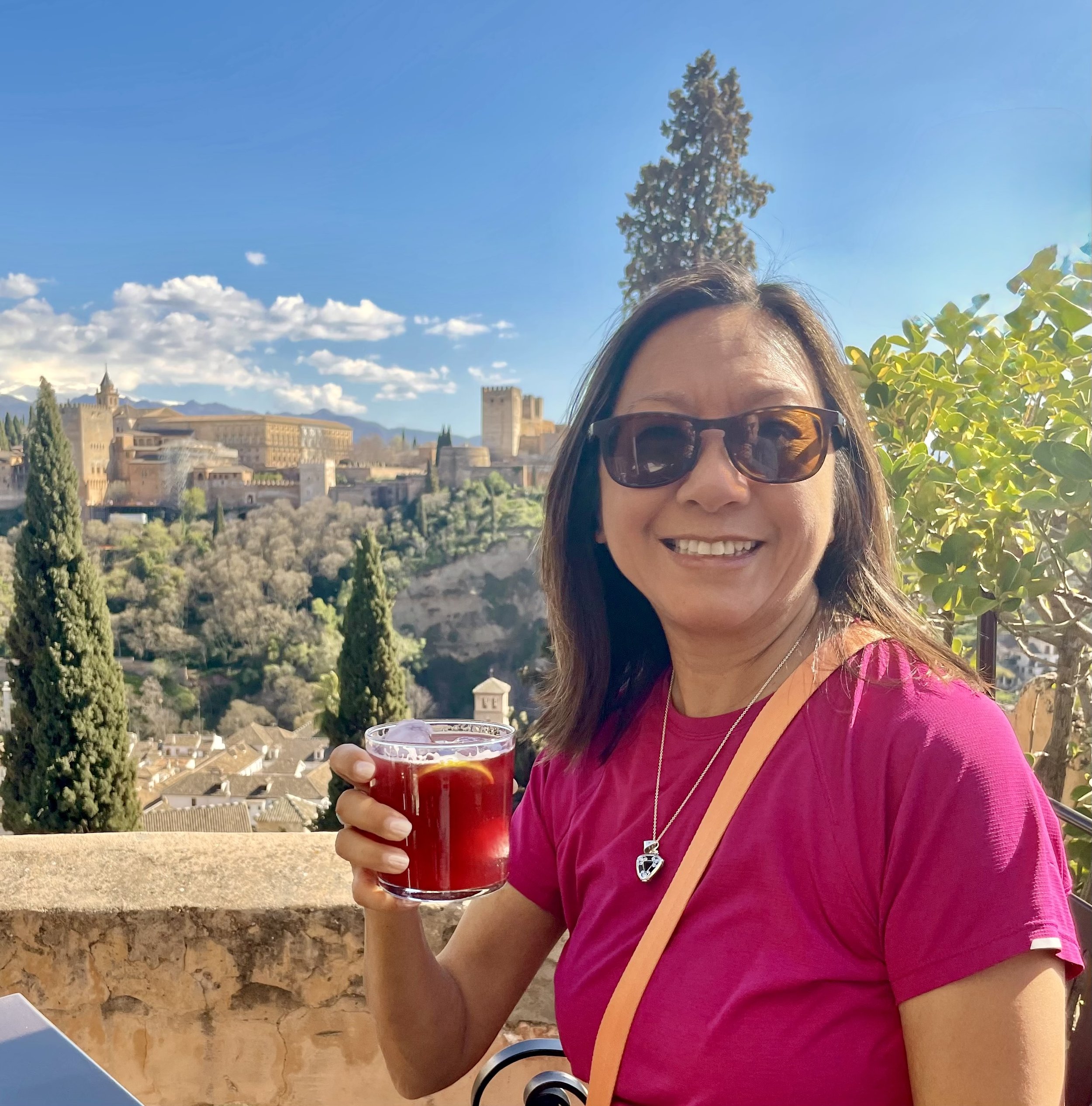

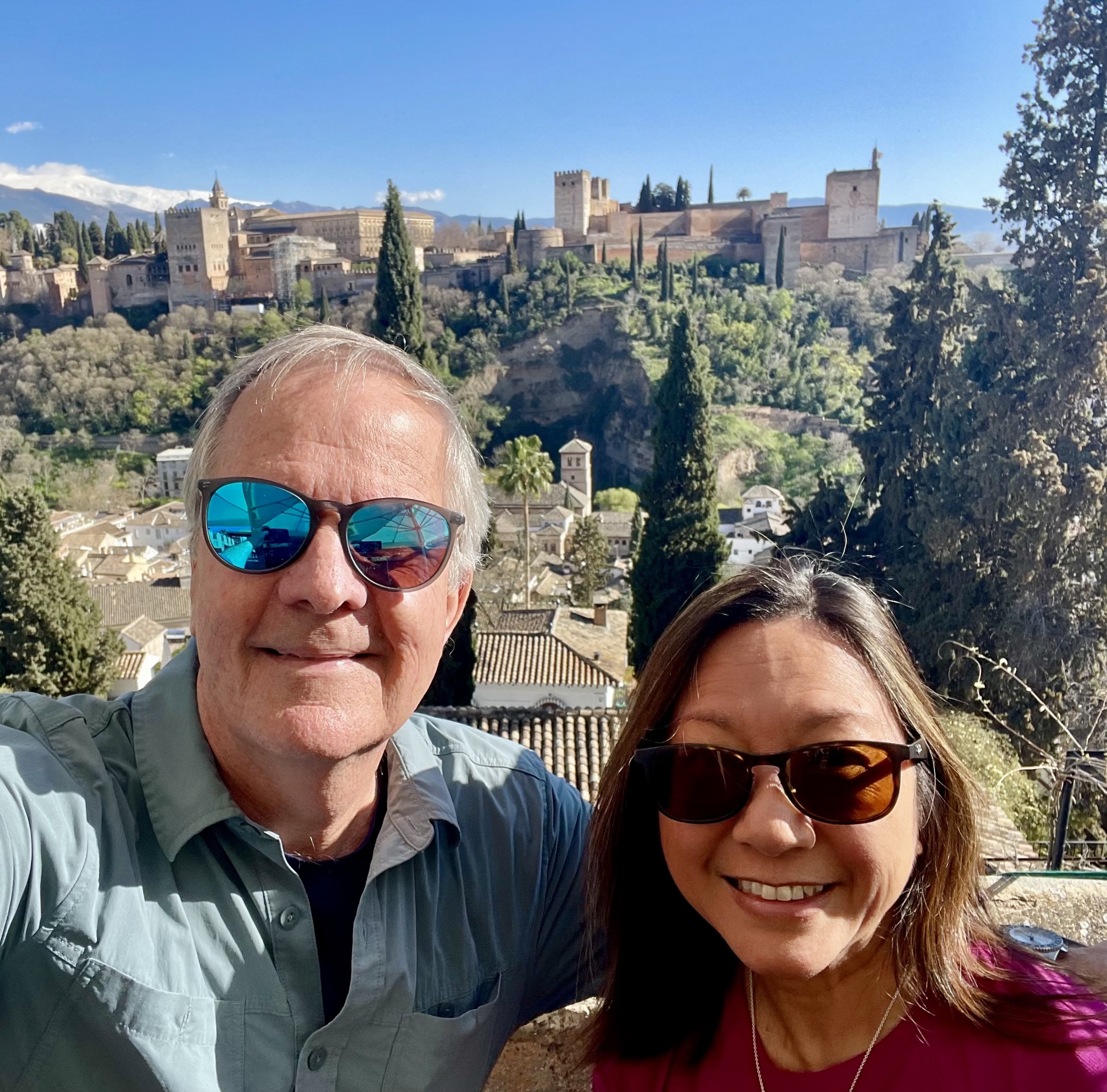
Just above the restaurant was Mirador San Nicolas, a spot popular with tourists for viewing the Alhambra in all its splendor. It was an appropriate finale for our day exploring that magical place.
